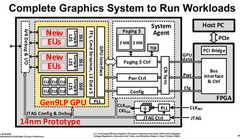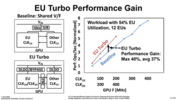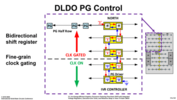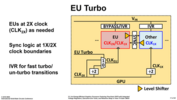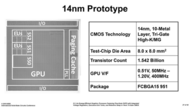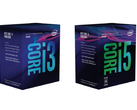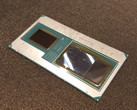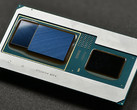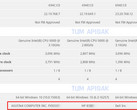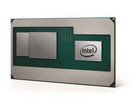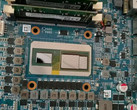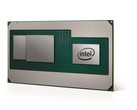When it comes to PC graphics cards, the choice has long been between AMD or Nvidia. While the two major GPU manufacturers have long been fighting against each other for market share, a new player may be entering the ranks from left field. At the ISSCC in San Francisco last week, Intel unveiled prototype schematics of their upcoming discrete GPU.
PC Watch, a Japanese tech site, released slides from the presentation detailing the GPU earlier today. This information describes the GPU in its current state. Keep in mind that the GPU is in the very early stages of prototyping, but Intel gave a few specs at the conference. The discrete GPU (dGPU) consists of 1.5 billion transistors manufactured using a 14 nm process. There are two main chips in the GPU; one contains the execution units and a system agent, and the other holds an FPGA (field-programmable gate array) that connects to the PC itself via a standard PCIe bus.
The graphics chip itself is based on Intel’s 9th generation graphics architecture (not to be confused with their forthcoming 9th generation CPU architecture, codenamed “Ice Lake”). Intel’s Gen 9 graphics architecture arranges the Execution Units (EUs) into clusters of 3, dubbed a “Slice,” but as this design is used for everything from Intel HD Graphics 510 to Intel Iris Pro Graphics P580, the architecture isn’t necessarily indicative of performance.
It does look like the dGPU favors efficiency over raw performance, however. Frequency ranges from 50 MHz up to 400 MHz on 0.51 volts to 1.2 volts, respectively. These clock speeds are a far cry from the latest cards that AMD and Nvidia make, so Intel’s dGPU shouldn’t be expected to compete in the same space. However, if the upcoming Kaby Lake G CPUs with integrated Vega graphics are any indication, Intel may be aiming squarely for the low-end gaming market or users that need a more specialized computational punch than their CPUs can give (if it ever hits the market).




